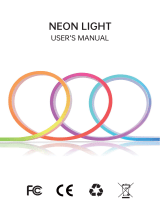
Safety and Performance
Declaration – electromagnetic immunity
Scan Monitor is intended for use in the electromagnetic environment specified below. The customer or the user of the Scan Monitor should ensure that it is used in such an
environment.
Immunity test IEC 60 601 Test Level Compliance Level Electromagnetic environment – guidance
Conducted RF
IEC 61000-4-6
3 Vrms
150kHz to 80MHz
N/A N/A
Radiated RF
IEC 61000-4-3
3 V/m
80 MHz to 2.5 GHz
N/A Portable and mobile RF communications equipment should be used no
closer to any part of the equipment or system including cables than the
recommended separation distance calculated from the equation applicable
to the frequency of the transmitter. Interference may occur in the vicinity of
equipment marked with the following symbol .
Electrostatic discharge (ESD)
IEC 61000-4-2
Contact:
±2 kV, ±4 kV, ±6 kV, ±8kV
Air: ±2 kV, ±4 kV, ±8 kV, ±15 kV
Contact:
±2 kV, ±4 kV, ±6 kV, ±8kV
Air: ±2 kV, ±4 kV, ±8 kV, ±15 kV
Floors should be wood, concrete, or ceramic tile. If floors are covered
with synthetic material the relative humidity should be at least 30%.
Electrical fast transient/burst
IEC 61000-4-4
2 kV for power supply lines
1 kV for input/output lines
N/A The main power quality should be of the kind used in a typical commercial
or hospital environment.
Surge IEC 61000-4-5 1 kV differential mode
2 kV common mode
N/A The main power quality should be of the kind used in a typical commercial
or hospital environment.
Voltage dips, short
interruptions and voltage
variations on power supply
input lines IEC 61000-4-11
-5% UT (95% dip in UT) for 0.5
cycles, -40% UT (60% dip in UT)
for 5 cycles, -70% UT (30% dip in
UT) for 25 cycles, -5% UT (95%
dip in UT) for 5 sec
N/A The main power quality should be of the kind used in a typical commercial
or hospital environment. If the user of the equipment or system requires
continued operation during power main interruptions, it is recommended
that the equipment or system be powered from an uninterruptible power
supply or a battery.
Power frequency (50/60Hz)
magnetic field IEC 61000-4-8
30 A/m
50 Hz or 60 Hz
30 A/m
50 Hz or 60 Hz
The power frequency magnetic field should be at levels characteristic
of a typical location in a typical commercial or hospital environment.





















